
The rainy season is the perfect season for keeping a garden at home. In this season you can enjoy gardening to the fullest, along with it is the best time to feel the beauty of nature. In this rain, if you prepare a kitchen garden in your house, then the thing is different! Due to this, the aroma will be spread in the house and at the same time, you will be able to taste the vegetables and spices planted at home.
Here are some of the gardening ideas for the home.
Container Gardening
Container Gardening is your ability as the gardener to chase the sun if necessary, as containers can be moved throughout the day. If you have no time to be moving containers whilst life carries on around you, no problem, plant for the amount of sun you have. Strawberry plants in a half oak wine barrel ideal for a smaller space. While it’s true that many plants will demand a minimum of 6 hours of direct sun per day there are several ‘shade vegetables’ that will tolerate or thrive in partial shade and dappled sunlight.
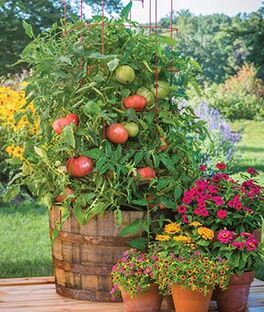
Straw bales themselves can be used as containers for gardening, even if they can be a little messy and break down relatively quickly they are one viable option. We’ve been enjoying pumpkins and zucchini straight off the top of straw bales this season – and it couldn’t be easier.
Be sure to provide enough water and food when gardening in containers, as the soil in containers will dry out faster and nutrients tend to flush through them with greater speed than their in-ground counterparts. Assess your sun exposure and plant accordingly. For more container gardening resources check out the forum at www.vagadagro.in
Vertical Gardening
There are so many ways to grow upwards let’s face it, most vegetables and fruit-bearing plants grow upwards when fitting food production into a smaller space, consider using a traditional trellis to a recycled pallet planter to a hanging hydroponic window garden. The options for vertical gardening are vast and require only some creativity – making productive space out of lost space is the key to maximum productivity in the small urban garden. Lettuce planted on vertical trays, what a great way to brighten up an ugly outside wall in an urban yard Which edibles lend themselves to vertical gardening you may be wondering; well I’m happy to report that the list is long. Here are just a few to get you started.
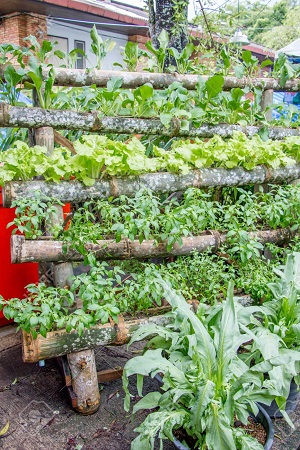
- Tomatoes
Cherry tomatoes in particular are very happy to grow in an upward fashion when given the right amount of support. Old nylons cut into strips are fabulous for tying your plants to their upward structures as they are flexible and will result in the least amount of stress on the plant where they are attached. Maybe you don’t wear nylons or your nylons are far too valuable to use in your urban garden, no worries, pick some up at the thrift store, they’ll cost next to nothing.
Alternatively, plant at the top of a wall down to a basement, and watch the branches fill up with sweet cherry tomatoes as the summer progresses.
- Winter squash and Melons
These plants vine naturally and will happily grow towards the sky. Again, they will need adequate support, particularly as they begin to fruit, but they react well to being trained to where you have the room. Peas and pole beans will happily grow up anything strong enough to support them. Cucumbers this favorite of the afternoon tea, spa, or spritzer ingredient on the warmer days of summer is relatively simple to grow in the smallest of spaces.
Asian greens, salad greens, strawberries, and kitchen herbs will all happily grow in nothing more than a recycled pallet on its side. Instructions for that can be found here. Greens, strawberries, or kitchen herbs will also happily grow in sections of rain gutter which can either hang or be fixed to the side of almost any southward-facing structure or in a network of hanging bottles in a south-facing window as seen here. Hanging rain gutter garden instructions are here.
- Potatoes
Potatoes will grow vertically if provided with the right container to do so. Imagine you’re using a clean garbage can with all kinds of holes drilled in the bottom. Throwdown a few inches of soil and compost, add your cut and cured pieces of seed potatoes, and cover them with 6 more inches of dirt. Water. When the aerial parts of the plant have reached about 6 – 8 inches, add more soil leaving only a few inches of green exposed. This cycle can be repeated several times throughout the season. When the plants turn brown and die, it’s time to harvest. The potatoes on the very top will be smaller and more delicate than those on the bottom, much like the gourmet “new” potatoes available at the store for an elevated price. I have heard tell of vertical potatoes growing in a straw-filled container allowing for easier harvest and I plan to try it this year.
Square Foot Gardening
If your gardening space is big enough for raised beds, they can be a great way to maximize space and effort. Not only can raised beds accommodate more plants per square foot, but gardening in a raised bed greatly reduces the need to weed. It also makes weeds much easier to uproot throughout the season, which can be a real blessing for your back, and if the beds are carefully spaced, even gardening from a wheelchair becomes an enjoyable possibility in small spaces. Garden upkeep was never easier.
Growing food in raised beds makes small garden maintenance easy.
Keyhole gardens
Keyhole gardens are designed to maximize space by eliminating the need for walkways as found in traditional row gardening or with raised beds. The design is also intended to be draught-resistant and deliver nutrients via compost throughout the entire growing season.
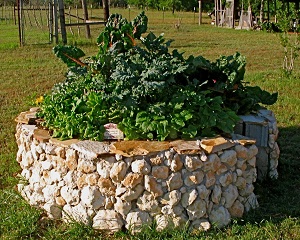
Keyhole gardens are raised-style beds that take the rough shape of a circle with a “keyhole” shaped path allowing access to the entire garden. In the center of the circle is a vertical tunnel that houses many layers of compost. As the compost breaks down it delivers nutrients and moisture directly to the bed. Certainly, an efficient way to grow, keyhole gardens can be constructed with many different materials as a quick Google search of the term will confirm. If you have space for a circle roughly 8 – 10 feet in diameter you can use whatever appropriate materials that are easily accessible corrugated siding, cedar posts, landscaping rock, bricks, or any combination thereof.
The Edible Landscape, Forest Gardens, and Permascaping
The art of edible permascaping involves planting food-bearing perennials in areas where ornamentals would traditionally take up space. In fact, many popular ornamentals are edible, so turning your landscape into a food-bearing paradise is easier than it might sounds.
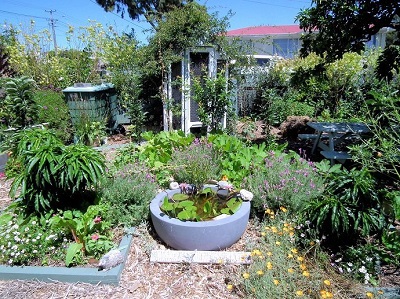
When looking at your entire property as the possible ground on which to grow food, your potential to increase your yield goes up accordingly. Lawns, for instance, can easily be transformed into garden plots, flowering perennial gardens can often accommodate plants that are both beautiful and edible, even forested areas on your property can produce food and in some cases might already have something wild worth harvesting.
Kalpesh Pathak
Related Posts
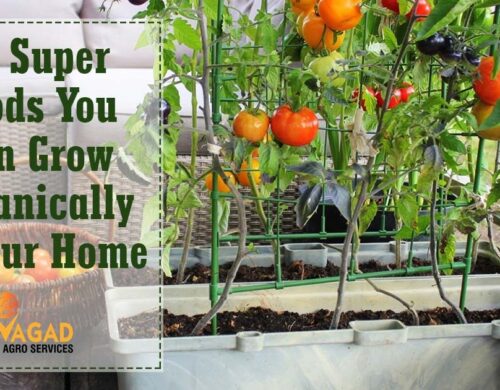
10 Super Foods You Can Grow Organically in Your Home Kitchen Garden
Organic farming is a approach of sustainable farming and these days ‘Organic Farming’ or ‘Organic Gardening’ or “Organic Kitchen Garden” is...
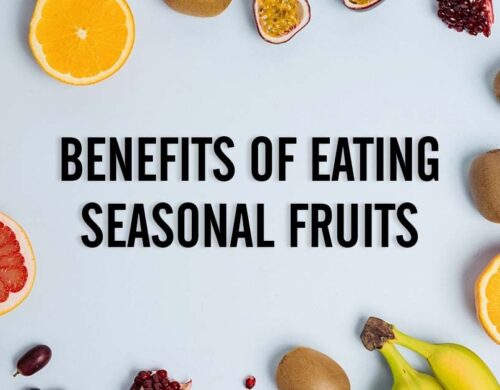
Benefits of eating seasonal Fruits & List of seasonal fruits
Access to fruits and vegetables is readily available year-round, but it's often recommended to consume seasonal produce. This idea is...
